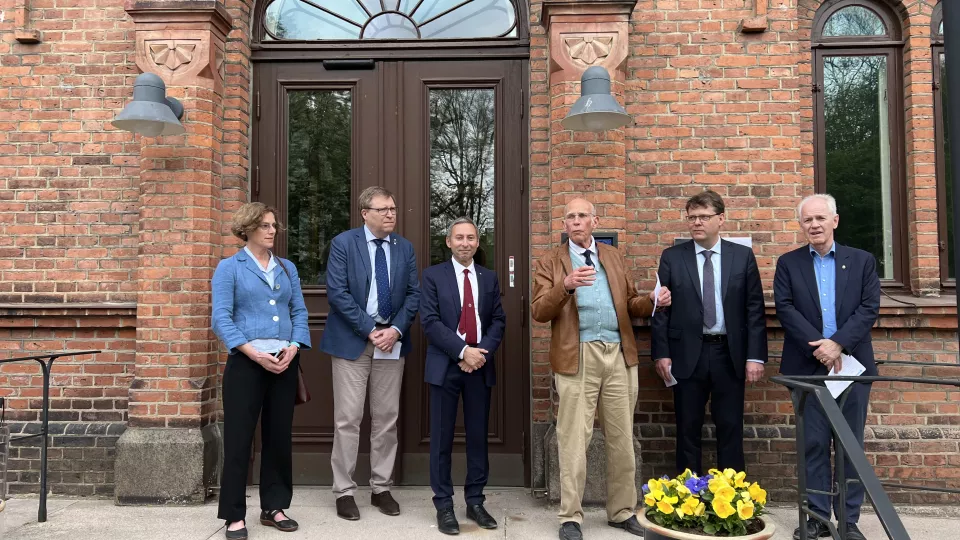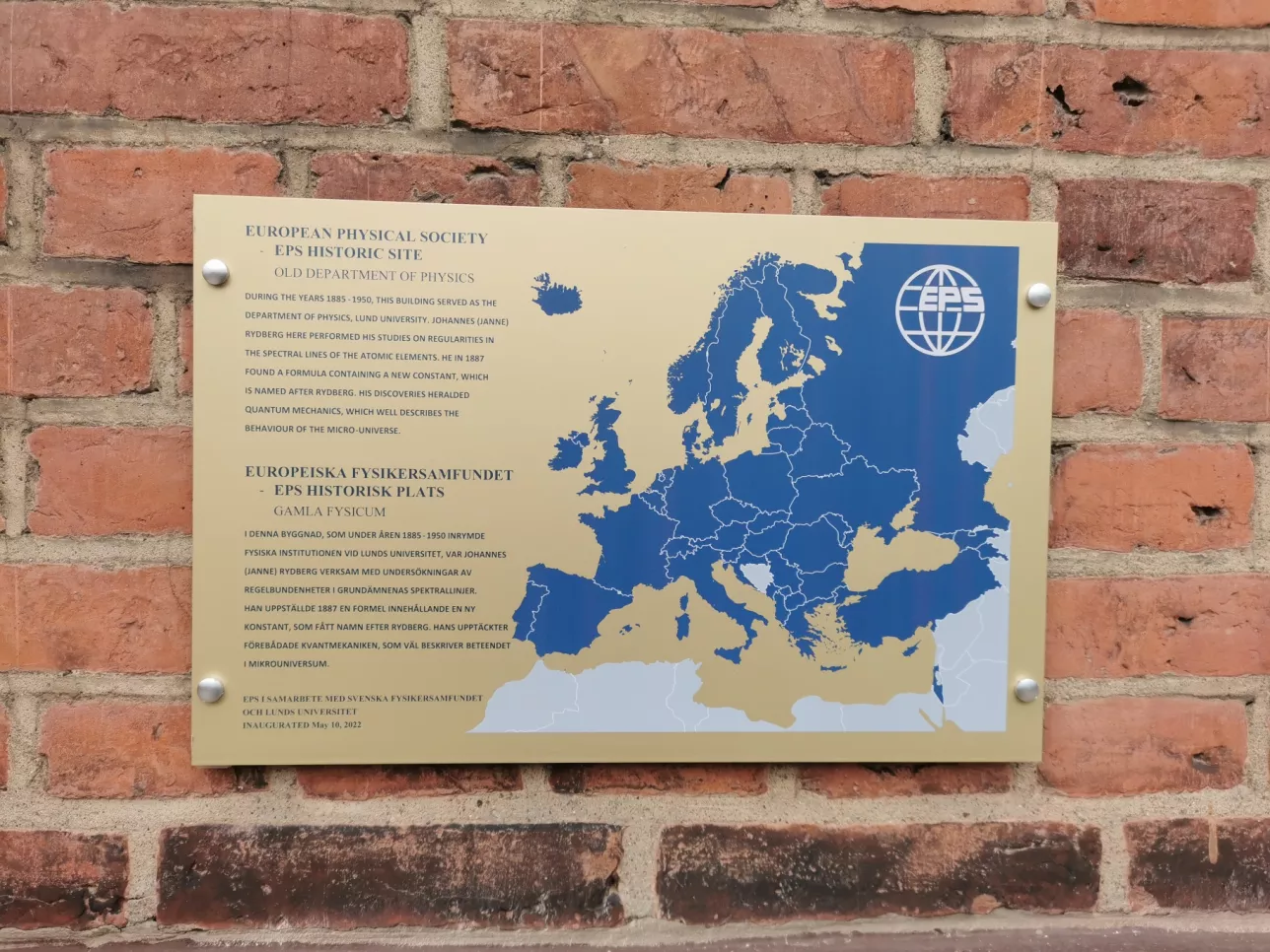The European Physical Society’s (EPS) committee for Historic Sites at has appointed Gamla Fysicum, currently the Pufendorf IAS, as an EPS Historic Site.
The reason for the appointment was Johannes Rydberg's (1854-1919) work in spectrum analysis. His is remembered (among other things) for the Rydberg's formula and Rydberg's constant.
The inauguration took place in the garden of the Pufendorf IAS on the 10th of May, in the presence of e.g. EPS President, Dr. Luc Berge from CEA, France, and Chairman of the EPS Committee; Professor Karl Grandin.
The building Classicum, was originally built for the Department of Physics and is therefore also called Gamla Fysicum (old Physicum). The architect was Henrik Sjöström, a student of Hugo Zettervall.
Several prominent researchers in atomic spectroscopy have been active in the house. Manne Siegbahn (1886-1978) who received the Nobel prize, made his well-known studies of X-ray transitions in atoms here, and Bengt Edlén (1906-1993) performed studies of the spectra of highly ionized atoms, and explained the origin of the spectral lines long observed in the solar corona. Edlén took the initiative for the construction of Nya Fysicum for the expanding physics research in Lund.



